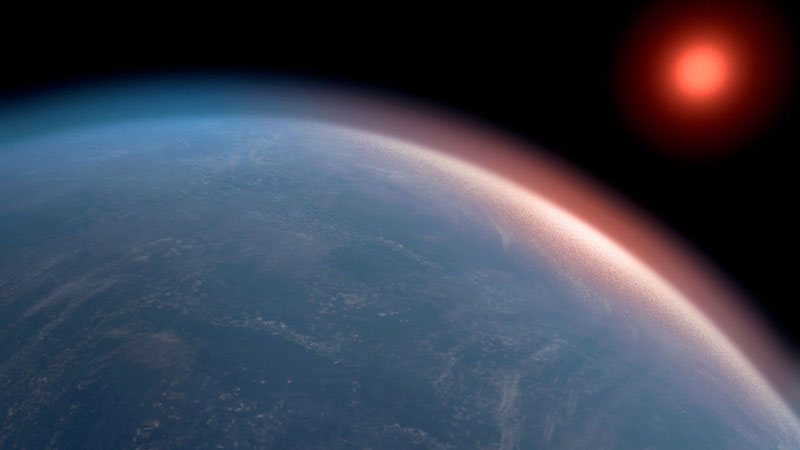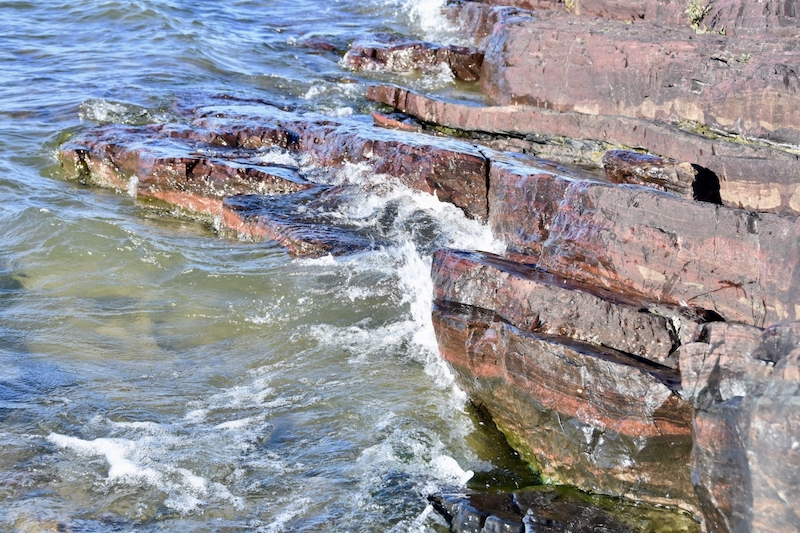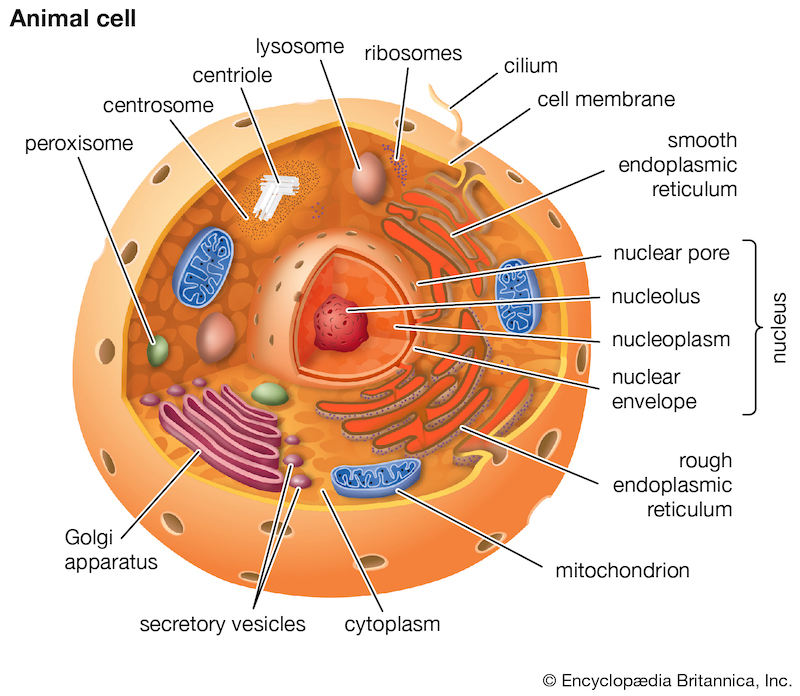
The Great Oxidation Event
Scientists know that “something” happened billions of years ago to create a dramatic rise in breathable oxygen. They call this the Great Oxidation Event. But what happened, exactly? It’s an important question as we begin the search for life on exoplanets, or distant worlds beyond Earth. After all, we might catch those alien worlds before or during their own Great Oxidation Events. So what do we need to look for, to find worlds in the process of developing their own large quantities of breathable oxygen? Researchers at McGill University in Montreal have now brought new evidence to this long-standing debate.
They said on January 31, 2022, that the dramatic rise in oxygen in Earth’s atmosphere took place alongside the evolution and expansion of complex eukaryotic ecosystems. Eukaryotes are any cells or organisms that possess a clearly defined nucleus. The scientists said their findings help explain how oxygen increased enough in Earth’s atmosphere to be be able to support animal life. And they said the findings have implications for the search for life beyond Earth.
The researchers published their peer-reviewed study in the Proceedings of the National Academy of Sciences (PNAS) on February 8, 2022.
The 2022 lunar calendars are here. Order yours before they’re gone!
Earth’s oxygen was almost non-existent
First, some historical background. In the beginning, when Earth was still young, oxygen was almost nonexistent. The extremely low levels weren’t nearly enough to support animal life as we know it today. So what changed? Scientists know that there was a massive increase in the amount of oxygen later in the planet’s history, the Great Oxidation Event. Exactly how and when that happened, however, is still a subject of debate. As Maxwell Lechte, one of the lead co-authors of the study at McGill University, stated:
Until now, there was a critical gap in our understanding of environmental drivers in early evolution. The early Earth was marked by low levels of oxygen, till surface oxygen levels rose to be sufficient for animal life. But projections for when this rise occurred varied by over a billion years, possibly even well before animals had evolved.

Ironstones and eukaryotic ecosystems
So how did the researchers discover these new findings about the rise of oxygen in Earth’s atmosphere? They did so by analyzing the chemistry of iron in sedimentary rocks from around the world. These rocks are rich in iron and were deposited along ancient coastlines.
Lechte and his colleagues estimated the amount of oxygen present in the atmosphere when the rocks first formed. From this, they could determine the impact the oxygen would have on eukaryotic microorganisms. Those organisms were the evolutionary precursors to today’s animal life. From the paper:
We use the isotopic record of iron oxides deposited in ancient shallow marine environments to show that oxygen remained at extremely low levels in the ocean-atmosphere system for most of Earth’s history, and that a rise in oxygen occurred in step with the expansion of complex, eukaryotic ecosystems.
Coauthor Changle Wang at the Chinese Academy of Sciences added:
These ironstones offer insights into the oxygen levels of shallow marine environments, where life was evolving. The ancient ironstone record indicates around less than 1% of modern oxygen levels, which would have had an immense impact on ecological complexity.
These low oxygen conditions persisted until about 800 million years ago, right when we first start to see evidence of the rise of complex ecosystems in the rock record. So if complex eukaryotes were around before then, their habitats would have been restricted by low oxygen.

Photosynthesis to the rescue
Those low oxygen levels were a barrier to more complex evolution that lasted for a few billion years, much of Earth’s history. So if the amount of oxygen was so low for so long, how did animals and other complex organisms evolve?
We can thank photosynthesis for that. In this process, plants and other organisms convert sunlight into energy, and release oxygen as a byproduct. During the Great Oxidation Event, both the atmosphere and oceans became enriched in oxygen as a result, allowing more complex forms of life to take hold and flourish.

Earth’s oxygen: implications for alien life
The most exciting aspect of this research is how it can help scientists look for evidence of extraterrestrial life. The findings help them better understand how life – more complex organisms in particular – evolved on our planet. However, they also provide important clues in regards to the search for life beyond Earth. Could some exoplanets in distant star systems have had their own Great Oxidation Events? If so, could we find the evidence for that? In terms of Earth-like oxidation events, it all comes down to oxygen.
As well as being abundant now on our own planet, oxygen is one type of possible biosignature that scientists want to look for when analyzing the atmospheres of exoplanets. Since Earth’s oxygen levels were very low for most of its history, this can help scientists estimate when a rocky, terrestrial planet like Earth stabilizes, even if there is little oxygen in its atmosphere. As noted in the paper:
These results indicate that Earth is capable of stabilizing at low atmospheric oxygen levels, with important implications for exploration of exoplanet biosignatures.
But if the oxygen levels happen to be very low, like on early Earth, how do you find it?

Using ozone to detect oxygen on exoplanets
In the case of low oxygen levels, the best way to detect the oxygen would be to look for its photochemical byproduct known as ozone. Noah Planavsky, a biogeochemist at Yale University, explained:
Ozone strongly absorbs ultraviolet light, making ozone detection possible even at low atmospheric oxygen levels. This work stresses that ultraviolet detection in space-based telescopes will significantly increase our chances of finding likely signs of life on planets outside our solar system.
Understanding how and why the Great Oxidation Event occurred is not only important for our knowledge about how complex life arose on Earth. It also serves as a critical guide in the search for life on other planets (or moons) as well. Have similar events happened elsewhere? As new telescopes like the James Webb Space Telescope begin deeper and more detailed observations of our universe, we will hopefully begin to answer one of the greatest questions of humankind: how did we get here?
Bottom line: Scientists announced new findings about when Earth’s oxygen first increased in the atmosphere. The results will help scientists search for evidence of life on other worlds.
Source: Strong evidence for a weakly oxygenated ocean–atmosphere system during the Proterozoic
The post Earth’s oxygen provides new clues to alien life first appeared on EarthSky.
from EarthSky https://ift.tt/v30tiAW

The Great Oxidation Event
Scientists know that “something” happened billions of years ago to create a dramatic rise in breathable oxygen. They call this the Great Oxidation Event. But what happened, exactly? It’s an important question as we begin the search for life on exoplanets, or distant worlds beyond Earth. After all, we might catch those alien worlds before or during their own Great Oxidation Events. So what do we need to look for, to find worlds in the process of developing their own large quantities of breathable oxygen? Researchers at McGill University in Montreal have now brought new evidence to this long-standing debate.
They said on January 31, 2022, that the dramatic rise in oxygen in Earth’s atmosphere took place alongside the evolution and expansion of complex eukaryotic ecosystems. Eukaryotes are any cells or organisms that possess a clearly defined nucleus. The scientists said their findings help explain how oxygen increased enough in Earth’s atmosphere to be be able to support animal life. And they said the findings have implications for the search for life beyond Earth.
The researchers published their peer-reviewed study in the Proceedings of the National Academy of Sciences (PNAS) on February 8, 2022.
The 2022 lunar calendars are here. Order yours before they’re gone!
Earth’s oxygen was almost non-existent
First, some historical background. In the beginning, when Earth was still young, oxygen was almost nonexistent. The extremely low levels weren’t nearly enough to support animal life as we know it today. So what changed? Scientists know that there was a massive increase in the amount of oxygen later in the planet’s history, the Great Oxidation Event. Exactly how and when that happened, however, is still a subject of debate. As Maxwell Lechte, one of the lead co-authors of the study at McGill University, stated:
Until now, there was a critical gap in our understanding of environmental drivers in early evolution. The early Earth was marked by low levels of oxygen, till surface oxygen levels rose to be sufficient for animal life. But projections for when this rise occurred varied by over a billion years, possibly even well before animals had evolved.

Ironstones and eukaryotic ecosystems
So how did the researchers discover these new findings about the rise of oxygen in Earth’s atmosphere? They did so by analyzing the chemistry of iron in sedimentary rocks from around the world. These rocks are rich in iron and were deposited along ancient coastlines.
Lechte and his colleagues estimated the amount of oxygen present in the atmosphere when the rocks first formed. From this, they could determine the impact the oxygen would have on eukaryotic microorganisms. Those organisms were the evolutionary precursors to today’s animal life. From the paper:
We use the isotopic record of iron oxides deposited in ancient shallow marine environments to show that oxygen remained at extremely low levels in the ocean-atmosphere system for most of Earth’s history, and that a rise in oxygen occurred in step with the expansion of complex, eukaryotic ecosystems.
Coauthor Changle Wang at the Chinese Academy of Sciences added:
These ironstones offer insights into the oxygen levels of shallow marine environments, where life was evolving. The ancient ironstone record indicates around less than 1% of modern oxygen levels, which would have had an immense impact on ecological complexity.
These low oxygen conditions persisted until about 800 million years ago, right when we first start to see evidence of the rise of complex ecosystems in the rock record. So if complex eukaryotes were around before then, their habitats would have been restricted by low oxygen.

Photosynthesis to the rescue
Those low oxygen levels were a barrier to more complex evolution that lasted for a few billion years, much of Earth’s history. So if the amount of oxygen was so low for so long, how did animals and other complex organisms evolve?
We can thank photosynthesis for that. In this process, plants and other organisms convert sunlight into energy, and release oxygen as a byproduct. During the Great Oxidation Event, both the atmosphere and oceans became enriched in oxygen as a result, allowing more complex forms of life to take hold and flourish.

Earth’s oxygen: implications for alien life
The most exciting aspect of this research is how it can help scientists look for evidence of extraterrestrial life. The findings help them better understand how life – more complex organisms in particular – evolved on our planet. However, they also provide important clues in regards to the search for life beyond Earth. Could some exoplanets in distant star systems have had their own Great Oxidation Events? If so, could we find the evidence for that? In terms of Earth-like oxidation events, it all comes down to oxygen.
As well as being abundant now on our own planet, oxygen is one type of possible biosignature that scientists want to look for when analyzing the atmospheres of exoplanets. Since Earth’s oxygen levels were very low for most of its history, this can help scientists estimate when a rocky, terrestrial planet like Earth stabilizes, even if there is little oxygen in its atmosphere. As noted in the paper:
These results indicate that Earth is capable of stabilizing at low atmospheric oxygen levels, with important implications for exploration of exoplanet biosignatures.
But if the oxygen levels happen to be very low, like on early Earth, how do you find it?

Using ozone to detect oxygen on exoplanets
In the case of low oxygen levels, the best way to detect the oxygen would be to look for its photochemical byproduct known as ozone. Noah Planavsky, a biogeochemist at Yale University, explained:
Ozone strongly absorbs ultraviolet light, making ozone detection possible even at low atmospheric oxygen levels. This work stresses that ultraviolet detection in space-based telescopes will significantly increase our chances of finding likely signs of life on planets outside our solar system.
Understanding how and why the Great Oxidation Event occurred is not only important for our knowledge about how complex life arose on Earth. It also serves as a critical guide in the search for life on other planets (or moons) as well. Have similar events happened elsewhere? As new telescopes like the James Webb Space Telescope begin deeper and more detailed observations of our universe, we will hopefully begin to answer one of the greatest questions of humankind: how did we get here?
Bottom line: Scientists announced new findings about when Earth’s oxygen first increased in the atmosphere. The results will help scientists search for evidence of life on other worlds.
Source: Strong evidence for a weakly oxygenated ocean–atmosphere system during the Proterozoic
The post Earth’s oxygen provides new clues to alien life first appeared on EarthSky.
from EarthSky https://ift.tt/v30tiAW

Aucun commentaire:
Enregistrer un commentaire